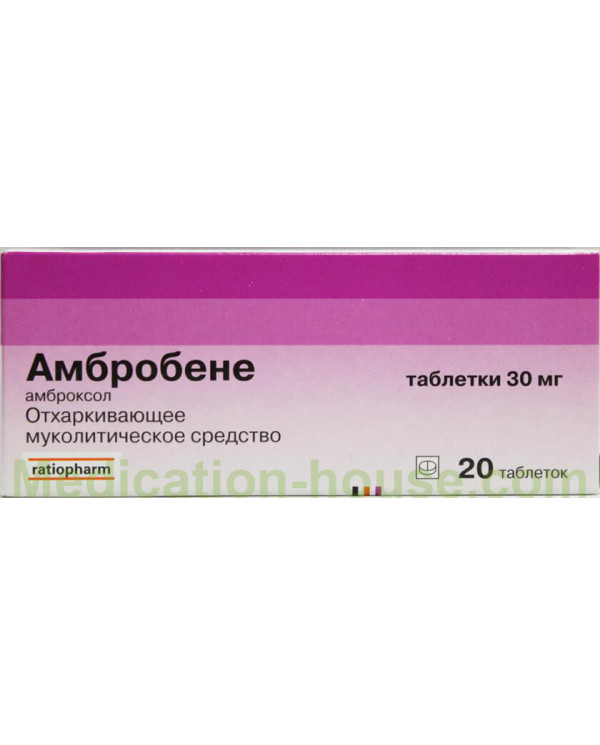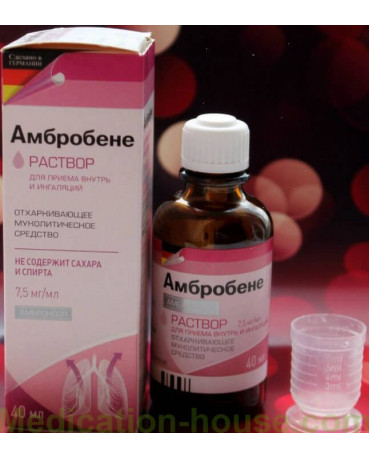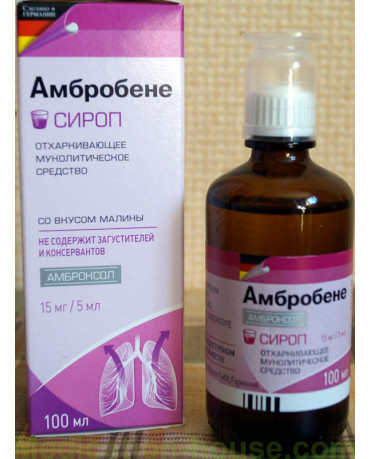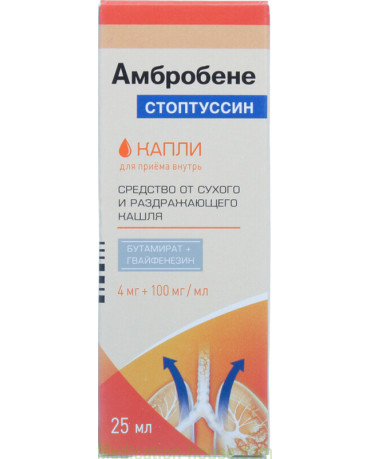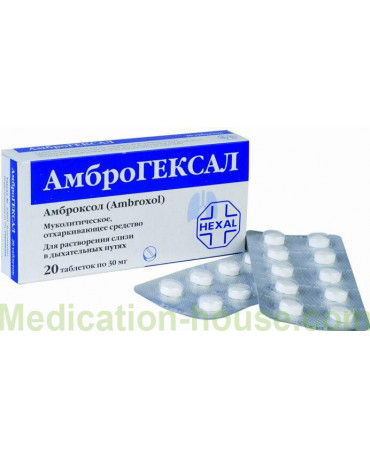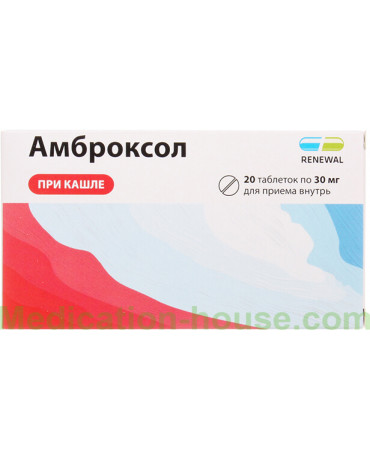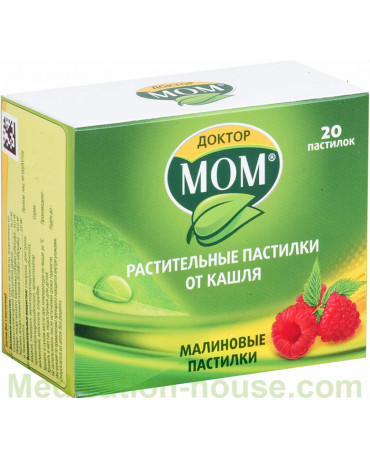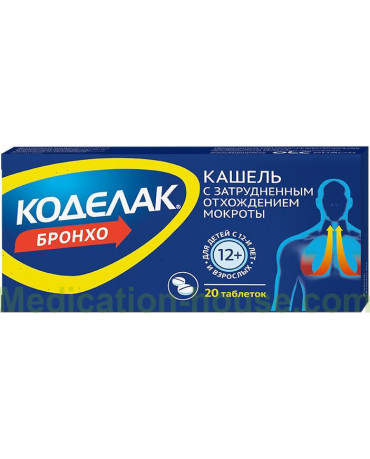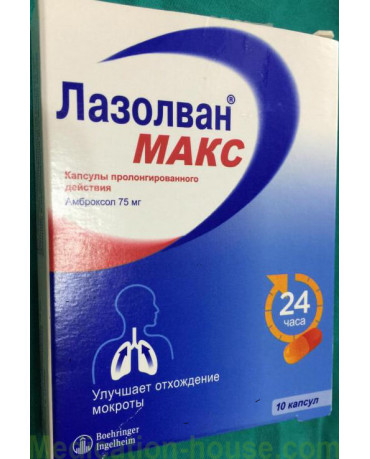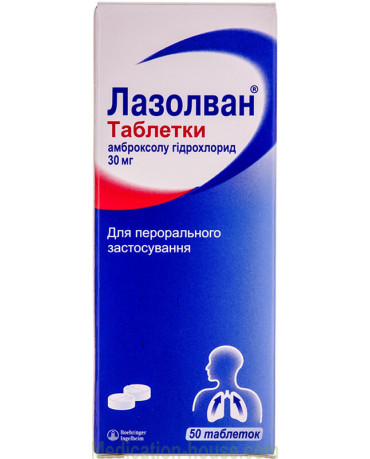Ambrobene instruction
You can buy Ambrobene here
pharmachologic effect
Mucolytic and expectorant drug.
Ambroxol is a benzylamine - a metabolite of bromhexine. It differs from bromhexine by the absence of a methyl group and the presence of a hydroxyl group in the para-trans position of the cyclohexyl ring. It has a secretomotor, secretolytic and expectorant effect.
After oral administration, the effect occurs after 30 minutes and lasts for 6-12 hours (depending on the dose taken).
Preclinical studies have shown that Ambroxol stimulates serous cells of the glands of the bronchial mucosa. Activating ciliated epithelial cells and reducing the viscosity of sputum improves mucociliary transport.
Ambroxol activates the formation of surfactant, having a direct effect on type 2 alveolar pneumocytes and Clara cells of the small respiratory tract.
Studies on cell cultures and in vivo studies on animals have shown that ambroxol stimulates the formation and secretion of a substance (surfactant) that is active on the surface of the alveoli and bronchi of the embryo and adult.
Also, in preclinical studies, the antioxidant effect of ambroxol was proved.
Ambroxol when combined with antibiotics (amoxicillin, cefuroxime, erythromycin and doxycycline) increases their concentration in sputum and bronchial secretions.
Pharmacokinetics
Absorption, distribution, metabolism
When administered, Ambroxol is almost completely absorbed from the digestive tract. Cmax is achieved 1-3 hours after ingestion. Due to the presystemic metabolism, the absolute bioavailability of ambroxol after oral administration is reduced by approximately 1/3. Metabolites formed in this regard (such as dibromoanthranilic acid, glucuronides) are eliminated by the kidneys. Plasma protein binding is about 85% (80-90%).
Ambroxol penetrates into the cerebrospinal fluid and through the placental barrier, and is also excreted in breast milk.
Breeding
T1 / 2 from plasma is from 7 to 12 hours. The total T1 / 2 of ambroxol and its metabolites is approximately 22 hours. It is excreted mainly by the kidneys in the form of metabolites - 90%, less than 10% is excreted unchanged.
Given the high binding to plasma proteins, large Vd, and slow redistribution from tissues to the blood, there is no significant elimination of ambroxol during dialysis or forced diuresis.
Pharmacokinetics in special clinical cases
In patients with severe liver diseases, ambroxol clearance is reduced by 20-40%.
In patients with severely impaired renal function, T1 / 2 of Ambroxol metabolites increases.
Indications
- acute and chronic diseases of the respiratory tract, accompanied by a violation of the formation and discharge of sputum.
Contraindications
- I trimester of pregnancy;
- children's age up to 6 years;
- lactose intolerance, lactase deficiency, glucose-galactose malabsorption (for tablets);
- Hypersensitivity to the components of the drug.
With caution, the drug should be used in patients with impaired motor function of the bronchi and increased sputum formation (with fixed cilia syndrome), with peptic ulcer of the stomach and duodenum in the acute phase, in the II and III trimesters of pregnancy, during lactation.
Patients with impaired renal function or severe liver disease Ambrobene should be prescribed with extreme caution, while patients should observe large intervals between doses or take the drug in a smaller dose.
Side effects of Ambrobene
Allergic reactions: rarely (from ≥0.1% to <1%) - urticaria, skin rash, angioedema of the face, shortness of breath, itching); very rarely (<0.01%) - anaphylactic reactions, incl. anaphylactic shock.
From the digestive system: rarely (from ≥0.1% to <1%) - nausea, abdominal pain, vomiting, diarrhea, constipation.
General disorders: rarely (from ≥0.1% to <1%) - fever, weakness, headache.
Other: rarely (from ≥0.1% to <1%) - dryness of the mucous membrane of the oral cavity and respiratory tract, exanthema, rhinorrhea, dysuria.
Overdose
Symptoms: no symptoms of intoxication with an overdose of Ambroxol have been identified. There is evidence of nervous agitation and diarrhea. Ambroxol is well tolerated when taken orally at a dose of up to 25 mg / kg / day. In case of severe overdose, increased salivation, nausea, vomiting, decreased blood pressure are possible.
Treatment: intensive care methods, such as inducing vomiting, gastric lavage, should be used only in cases of severe overdose, in the first 1-2 hours after taking the drug. Symptomatic treatment is indicated.
special instructions
It should not be combined with antitussive drugs that make sputum excretion difficult.
Extremely rarely, with Ambrobene, severe skin reactions were observed, such as Stevens-Johnson syndrome and Lyell's syndrome. If the skin or mucous membranes changes, the patient should immediately consult a doctor and stop taking the drug.
With renal failure
Caution should be used in case of impaired renal function, reducing the dose and increasing the time between doses of the drug (treatment in such cases should be carried out under the supervision of a doctor).
With impaired liver function
Caution should be used in severe liver diseases, reducing the dose and increasing the time between doses of the drug (treatment in such cases should be carried out under the supervision of a doctor).
Pregnancy and lactation
There is insufficient data on the use of ambroxol during pregnancy, especially in the first 28 weeks. The use of Ambrobene in the second and third trimesters of pregnancy is possible only as prescribed by the doctor, after a careful assessment of the expected benefits of therapy for the mother and the potential risk to the fetus.
The use of the drug in women during lactation has not been adequately studied, therefore Ambrobene can be taken only as prescribed by the doctor, after a careful assessment of the ratio of the expected benefit of the therapy for the mother and the potential risk for the infant.
In experimental animal studies, no teratogenic effect was detected; it is shown that ambroxol is excreted in breast milk.
Drug interaction
With the simultaneous use of ambroxol and antitussive agents due to suppression of the cough reflex, stagnation of the secret may occur. Therefore, such combinations should be selected with caution.
With the combined use of ambroxol and antibiotics amoxicillin, cefuroxime, erythromycin and doxycycline, the concentration of the latter in sputum and bronchial secretion increases.
Mode of application
The duration of treatment is set individually depending on the course of the disease. It is not recommended to take Ambrobene without a doctor’s prescription for more than 4-5 days. The mucolytic effect of the drug is manifested when taking a large amount of liquid. Therefore, during treatment, a heavy drink is recommended.
Tablets Ambrobene should be swallowed whole, without chewing, after eating, drinking plenty of fluids.
Children aged 6 to 12 years should take 1/2 tab. 2-3 times / day (15 mg of ambroxol 2-3 times / day).
Adults and children over 12 years of age in the first 2-3 days of treatment should take 1 tab. 3 times / day (30 mg of Ambroxol 3 times / day). If therapy is ineffective, adults can increase the dose to 2 tablets. 2 times / day (120 mg ambroxol / day). In the following days, take 1 tab. 2 times / day (30 mg of Ambroxol 2 times / day).
Storage conditions and shelf life
The drug should be stored out of the reach of children at a temperature not exceeding 25 ° C. Shelf life is 5 years.
Terms of sell
You can buy Ambrobene without a prescription.

